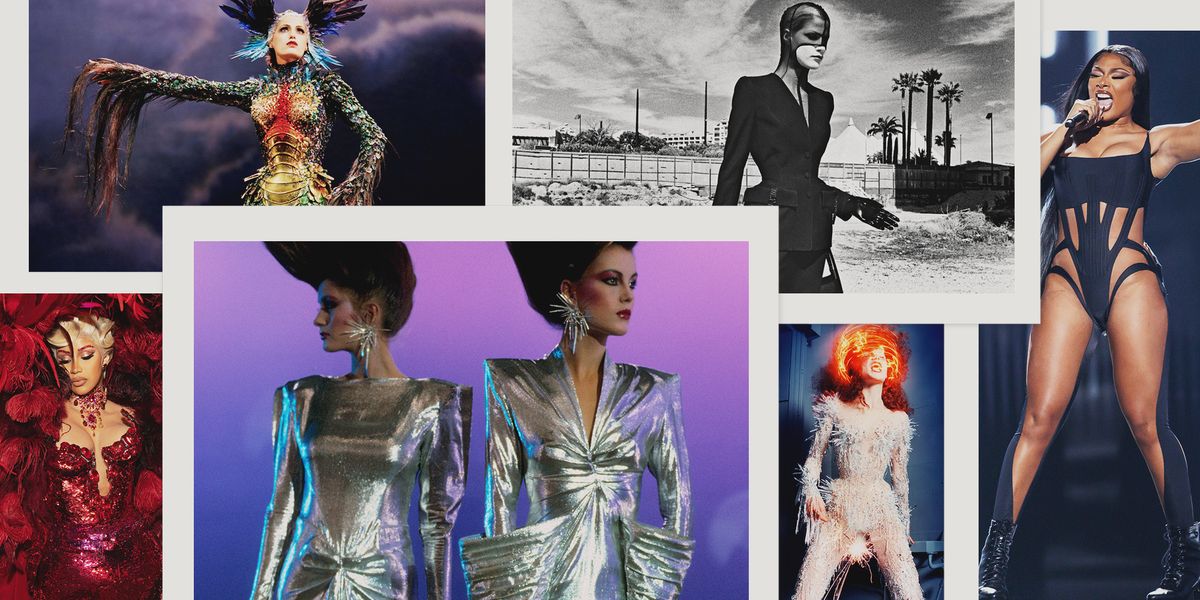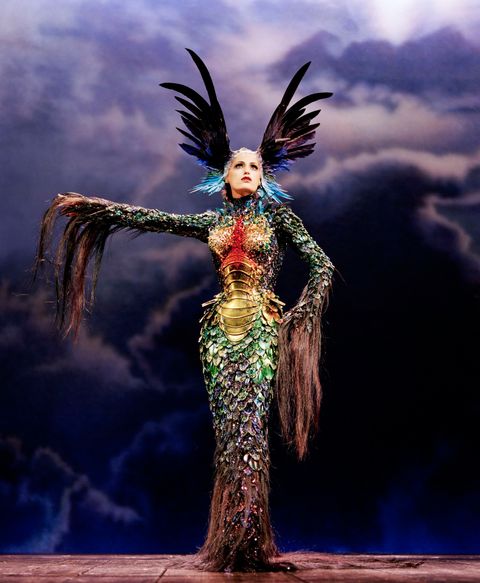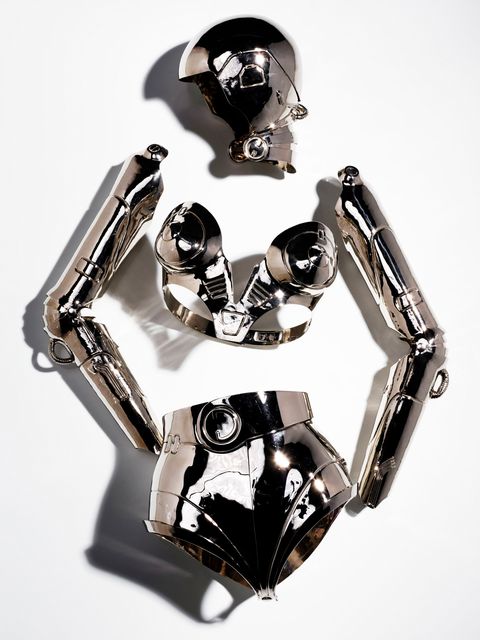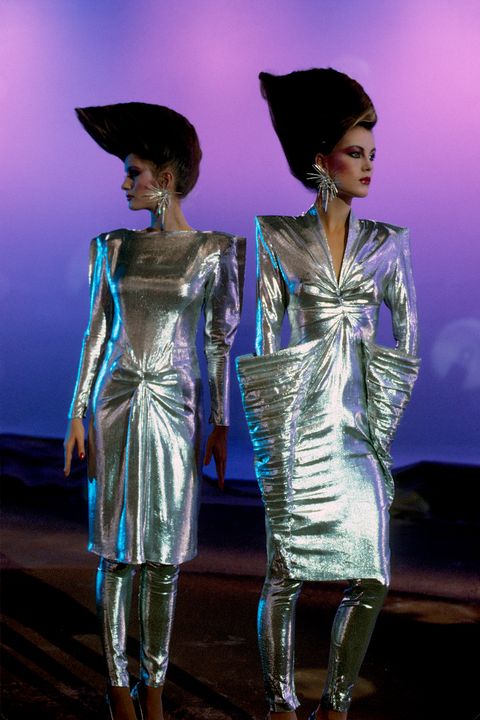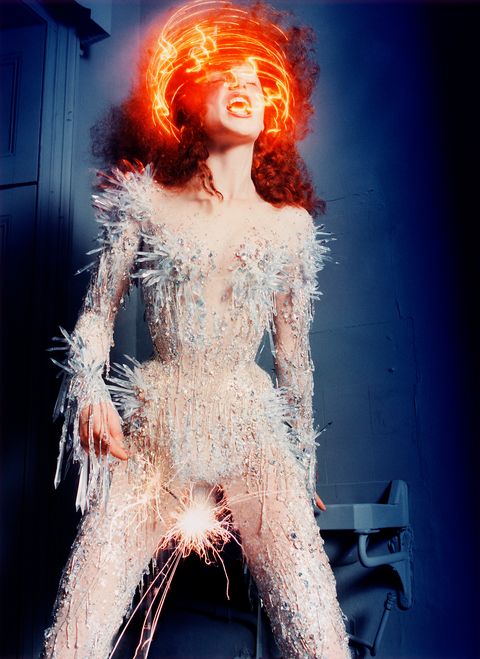Products You May Like
Style Points is a weekly column about how fashion intersects with the wider world.
More than a million people have seen “Thierry Mugler: Couturissime” over the course of a run that’s taken the show from Montreal and Paris to Rotterdam and Munich. But until this month, it had never come to New York, where the designer lived for a dozen years. It was important, says curator Thierry-Maxime Loriot, that the show make its way here for its last stop, “to give him a last goodbye, because New York was a city that inspired him.”
The show—which opens on November 18 at the Brooklyn Museum—gathers together the late designer’s pathbreaking work, which inspired a generation of acolytes, including John Galliano and Alexander McQueen, and is credited with injecting the once-fading genre of couture with an inimitable aura of cool. Despite his ardent fashion world following, Mugler’s work, Loriot argues, “was not about fashion. It was so spectacular, so different, so timeless.” And simultaneously so ahead of its time. “He was quite misunderstood,” Loriot reflects, “because some people said he was putting women back in corsets, and transforming them into robots, and butterflies, and animals.” But that, he argues, “was more [about] giving them the freedom to be whoever they wanted to be.”
“He was such a visionary in his own lane,” recalls the house’s current creative director, Casey Cadwallader. “His craft looked different, his shapes looked different, the people on the runway looked different. He was just doing him. And I think that he was clashing against certain standards of taste and aesthetic, and he did not care. For me, that is the core of the story—that this man fought for his direction and lived what was his passion.”
His clothes aren’t timeless in the usual sense of the word: the classics, the safe bets. Instead, they almost exist outside of time, and their appeal translates just as well today as they did 30 or 40 years ago. No wonder Cardi B opted for Mugler’s “Venus” shell dress at the 2019 Grammys and Kylie Jenner chose a body-conscious ’90s look of his for the most recent CFDA Awards. These are women who could have their pick of any designer in the world, but they’re pining after archival Mugler pieces. And, after seeing his body of work, “you understand why pop stars now are fighting to wear these very precious archive [pieces],” says Loriot.
Mugler’s runway shows felt like Instagram- or TikTok-ready experiences well before either of those were a reality. As a former ballet dancer, he knew his way around a theatrical production. Everyone from Traci Lords to Tippi Hedren to Ivana Trump in her “don’t get mad, get everything” era appeared on his runway at some point. James Brown performed at his 20th anniversary show at the Cirque d’Hiver; a pregnant Pat Cleveland was lowered from the ceiling at his fall 1984 extravaganza. Cadwallader cites the spring 1991 “Butterfly” show, featuring and inspired by Diana Ross, as a personal favorite.
Mugler was also ahead of his time when it came to emphasizing diversity, whether it came to race, size, or gender expression. “To [cast] women that were very voluptuous, at that time, it was not something that was trendy. It was something that was just natural for him, to show different types of beauty, and different types of bodies. Now people see it, and they recognize it,” Loriot says. He also calls back to the spring 1998 show (“Here’s a full show, with only Black girls, and it’s fantastic, and people didn’t get it”), and to the fact that Mugler was one of the first designers to feature trans models on his catwalks and in his videos. His fashion house, says Cadwallader, “was a place of acceptance, open-mindedness, a place where you could shine, where you could be your best and you knew you were welcome.”
Mugler’s designs explored his fascination with transhumanism, the belief that humans can evolve beyond their limitations with the help of technology—thus his penchant for showing models morphing into cars or robots. His futuristic approach extended to his views on retrospectives, Loriot says. “[Mugler was] someone who was not nostalgic, and that’s one reason why he always refused to have a show on his work. It was because he wanted it to be, not a nostalgic look to the past, but more something towards the future…His fantasy was that he would create the perfect outfit that everybody on the planet would wear, and everybody would be the same, so that the only thing that would stand out was your personality.”
After leaving fashion in 2002, Mugler went on to pursue a range of projects, from collaborating with Cirque du Soleil to working as Beyoncé’s artistic director for her I Am… World Tour. “He left the fashion industry for a reason. I think it was just that he had a good bullshit detector,” says Loriot. “He was someone who could sense who was there for the good, or for the wrong, reason.”
The Brooklyn edition of the exhibit will include a perfume room dedicated to Mugler’s fragrances, including Angel, which changed the perfume industry forever by kicking off the “gourmand” category of scents. “The first [Angel] campaign was shot in New York, on the Chrysler building, with Estella Lefébure,” says Loriot, “and you see the World Trade Center in the background, so it’s a link with New York.”
Loriot hopes that the exhibit will appeal to everyone, “from my parents, to young kids, to people who think they don’t like fashion, but will just be amazed to see Cardi B’s costumes. There’s a lot for everyone.”
Adds Cadwallader: “His work has so much life to it, as does the culture that it was made within. The thing about the archive is that there is so much energy and so many ideas running through it—every time I look, I see something new. He was this incredibly passionate man, who did whatever he dreamed and whatever he wanted. I think people will be very inspired.”
